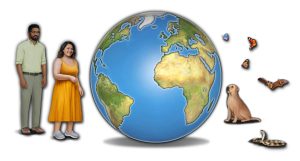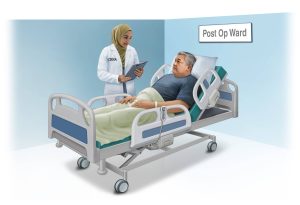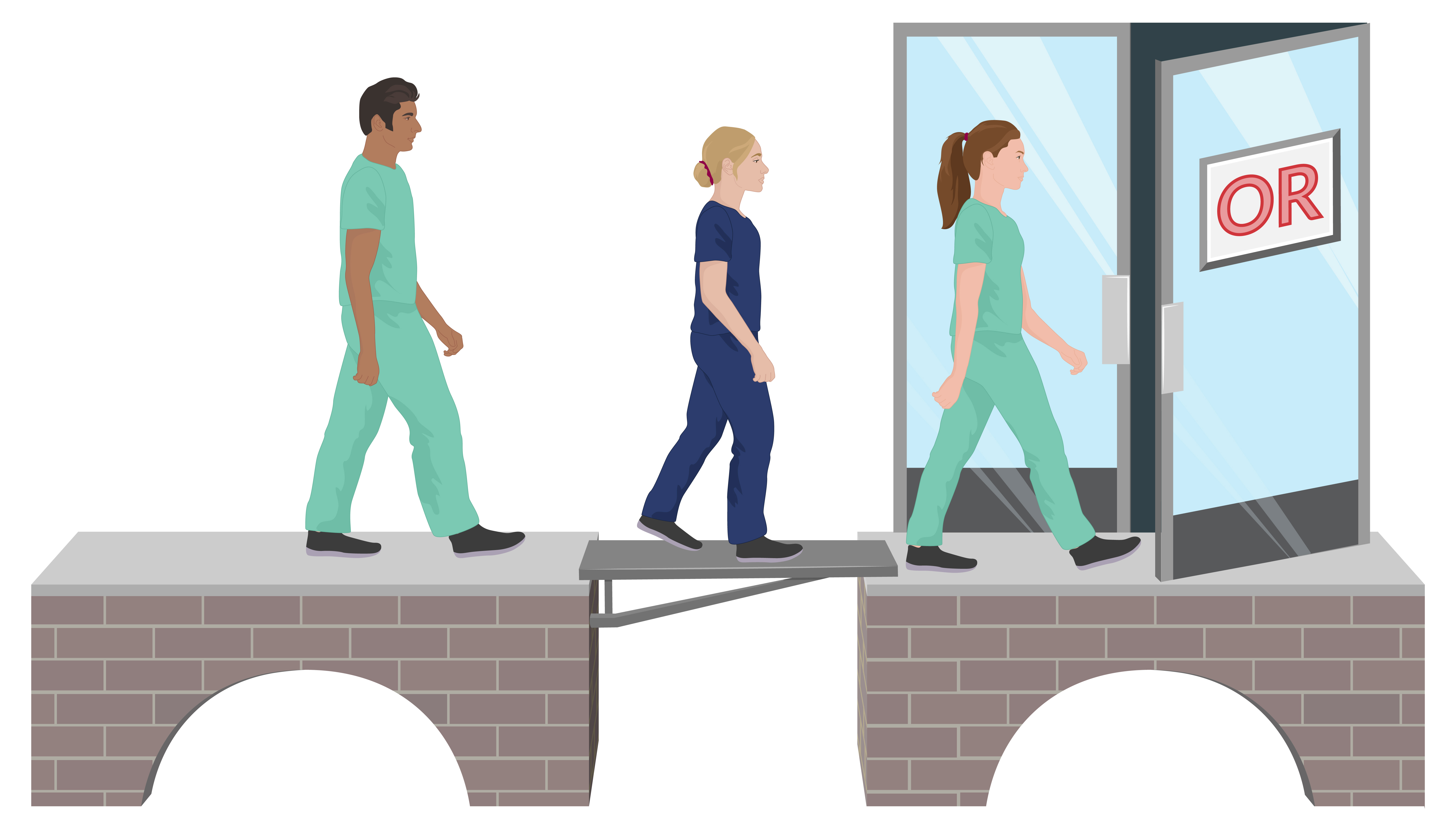As chronicled in Ed Yong’s remarkable book, An Immense World: How Animal Senses Reveal the Hidden Realms Around Us, creatures of all kinds observe, sense, interact with, and experience our world differently than humans do. Consider that a platypus or shark senses the electric auras cast out by potential prey or enemies alike. The tiny jumping spider has eight eyes occupying over half the volume of its head, each strategically tasked. Some hummingbirds and many insects respond to ultrasonic tones. Dogs, ants, moths, and forked-tongued snakes detect odorants at infinitesimally small titers. The mosquito tastes through receptors on its feet—landing on skin sprayed with DEET signals the insect to “get off ASAP.” Sea turtles and other critters use magnetoreception to navigate. All define how each interacts with their environment and how they become masters of it.
Yong defines how an organism senses, interacts with, perceives, and experiences their environment as their “Umwelt,” based on work by an early 20-century biologist. For example, we hear the world around us as the energy that emerges from beyond and arrives at our auditory detectors. A bat hears the world quite differently. It inputs energy into the ether, recapturing it as it bounces back. As Yong eloquently notes, “The bat speaks, and a silent world shouts back.” Our Umwelts are as different as night and day.
These incredible adaptations give each creature a unique edge in the game of survival. Whether it’s snagging a hidden meal or slipping away from a lurking predator, their specialized traits open doors to life’s essentials. They help animals find shelter, move confidently through their environment, and reproduce successfully. In short, these organisms don’t just survive in their worlds—they thrive in them. They are the undisputed masters of their own Umwelt, perfectly tuned to the rhythms of their surroundings.

Human senses are too often underestimated as only five: touch, hearing, sight, taste, and smell. But this is a considerable injustice by not including proprioception (body segment sensing), equilibrioception (sense of balance), sense of hunger, sense of thirst, and our immune sense (immune system senses an attack by foreign intruders). And what about that ‘sense that we have about something,’ that is, our gut feeling or instinct? We could add to the list, but you get the point. Now, marry these varied senses to our training and experience, and you have an extraordinary package. This positions each of us, as CRNAs, into a category of healthcare providers whose talent domain is arguably shared exclusively with physician anesthesiologists. And perhaps we should consider expanding the CRNA role into postoperative care.
Table of Contents
The CRNA’s Umwelt
You may think we are being self-serving, but to justify our view, allow us to elaborate. We expertly interact with, perceive, react to, and experience one of planet Earth’s most complicated, constantly evolving environments. Doing so describes our Umwelt: the operating room, caring for a patient having surgery under the influence of arguably the most dangerous drugs in the formulary. We navigate our Umwelt using a sophisticated array of technologies extending the capabilities of our innate senses. This is all nourished, fine-tuned, and interpreted using our unique education, training, and experience.
Our Umwelt isn’t static—it’s a living, evolving landscape. In just the past few years, we’ve witnessed a wave of innovation: new agents, cutting-edge techniques, breakthrough technologies, and transformative care pathways. Not only have these advances emerged, but they’ve also stood the test of rigorous evidence, pushing beyond established thresholds and reshaping what’s possible in our environment. As we observed during the COVID-19 pandemic, CRNAs experienced, with confidence and aplomb, a new dimension in their scope of practice where they assumed a greater perioperative presence. We observed CRNAs being used as clinical intensivists in many institutions as their Umwelt expanded. Our observations were fueled by the knowledge that while anesthesia and surgery have grown safer, the common and significant burden of mortality in the immediate postoperative period remains largely unappreciated by many and remains poorly understood.
Postoperative surgical mortality: How concerning is it?
How significant is this burden? While patients undergo surgery for targeted benefit, the risk of death, as conveyed in even routine surgical consents, is always a possibility. Of course, the risk of its occurrence varies greatly based on the nature of the surgery, patient comorbidities, and the providers’ skill and experience. If deaths occurring shortly after surgery were classified as a distinct cause, they would rank just behind heart disease, stroke, and cancer among the leading causes of death in the United States.
In a remarkable lecture, Dr. Daniel Sessler, Professor and Chair of the Department of Outcomes Research at the Cleveland Clinic, and the most highly published and extensively cited living anesthesiologist, detailed an alarming practice issue. He noted that death occurring within 30 days of surgery remains very high and has not budged much in recent decades. He terms it “anesthesia’s greatest challenge.”

Myocardial injury, major bleeding, sepsis, stroke, and human error are major causes of postop death, and while purely respiratory deaths are not frequent, those that do occur are likely preventable. Studies using continuous, real-time electronic monitoring reveal that hypotension and hypoxemia occur frequently, events that are missed given the Nightingale-ish persistence of taking vital signs only every 4-6 hours on the floor.
A prominent anesthesia safety expert, Dr. Steven Shaeffer, long-time editor of Anesthesia & Analgesia, recently echoed Sessler, citing postoperative mortality as “the major problem facing anesthesiology.” Even in institutions your APEX team has worked in, hospitalists and medical internists have expanded their role to include postoperative patient management. Did you know that fellowships are now offered in internal medicine programs in perioperative medicine? Yet if we are to believe Sessler and others—and the supporting evidence seems overwhelming—current efforts have been far less than impactful.
An Umwelt-expanding domain for the CRNA?
CRNAs’ responsibilities are generally discontinued at PACU handoff as a matter of policy, circumstance, and logistics. Yet our knowledge, experience, insightfulness, and familiarity with the interactivity of surgery, drugs, physiology, pathophysiology, and patient safety ideally position us to expand the CRNA role to postop management and do so masterfully.
You might argue that floor nurses can activate the rapid response team if there is a problem or concern. However, the evidence supporting their effectiveness is low; they are reactionary and not preventive by design. In many cases, a precipitous downward spiral that may have been interrupted with earlier oversight results in failure-to-rescue. A case of too little, too late?
In 2024, Sessler urged his colleagues to step up and assume postoperative care as a focus of their practice, creating a new branch of anesthesiology that expands their Umwelt before it’s too late. He believes “tens of thousands of lives” could be saved yearly. Even before Sessler’s call, this was apparent to us, based on the significant intensivist roles that CRNAs demonstrated outside the OR during the COVID-19 pandemic.
You might further suggest that our career cup is full. That somewhat myopic view ignores how CRNAs have innovatively expanded and demonstrated mastery of their Umwelt. Consider their enormous successes as independent practitioners in acute pain management, chronic pain management, and ambulatory ketamine clinics treating a variety of conditions, including PTSD, depression, fibromyalgia syndromes, and anxiety. Also, consider our expertise in diagnostic ultrasonography, telehealth integration like virtual consultations with patients, as aestheticians, and a wide range of independent practice opportunities that just a few years ago seemed unlikely. Our Umwelt of a decade ago was just a fraction of what it is today.
Since Galileo’s 1609 discovery of our moon’s craters, our understanding of the cosmos has expanded by many orders of magnitude. Research and ever-more-powerful land telescopes, space probes, and the Hubble and James-Webb space telescopes have expanded the human understanding of the universe nearly back to its beginning.
Likewise, CRNAs have mastered our evolving Umwelt. We should not permit others to constrain us, but rather allow research, innovation, and our expertise to guide us into practice domains where we can most meaningfully contribute. Should we continue to expand our Umwelt? We believe so.
Your Umwelt is growing—make sure your knowledge is too. Browse APEX’s CRNA continuing education courses to help support your growth as a CRNA.






